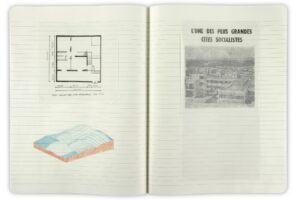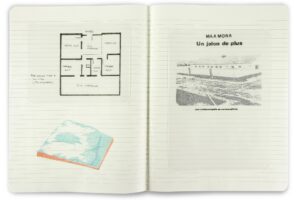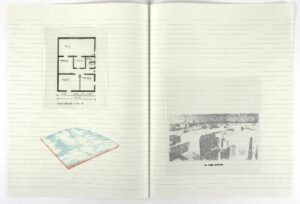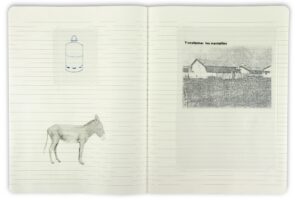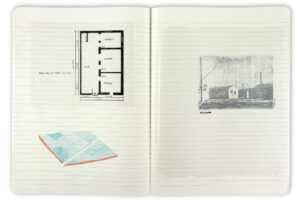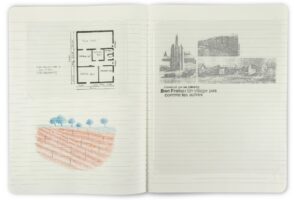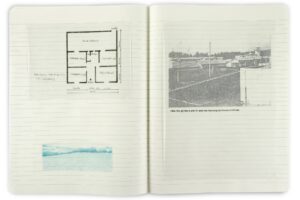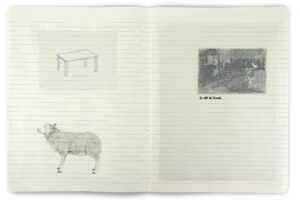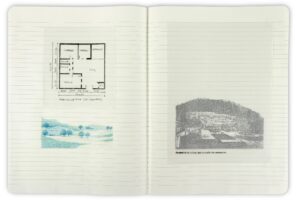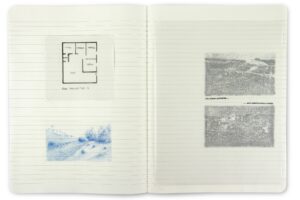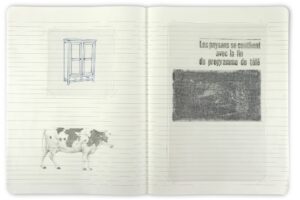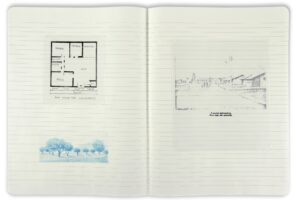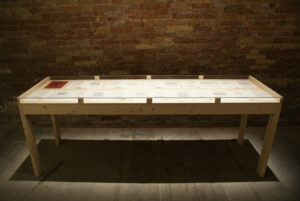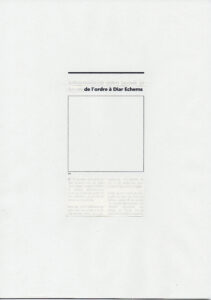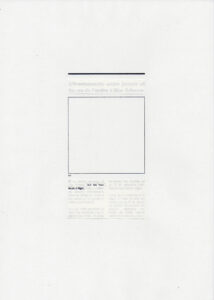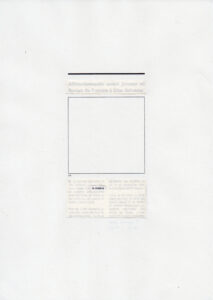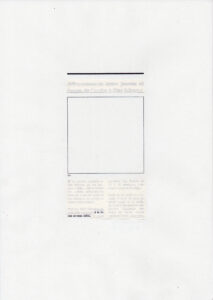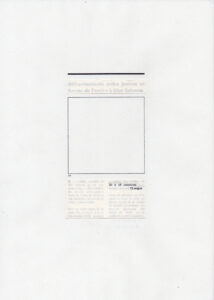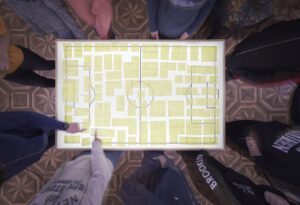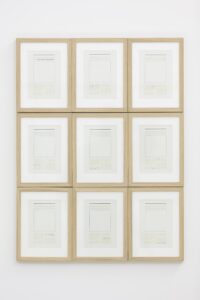Born in 1980 in Algiers, Algeria. Lives and works in France and Algeria. After studying computer science in Algeria, Massinissa Selmani graduated from the École supérieure des beaux-arts in Tours, France. His work has subsequently been hailed by a special mention of the jury at the 56th Venice Biennale in 2015. In 2016, He received the Art [ ] Collector Prize (Paris) and the Sam Art Projects Prize for contemporary art (Paris).
Massinissa Selmani’s work aims to create drawn forms mingling a documentary approach with fictional constructions and animations, while taking as its point of departure contemporary political and social issues from press cuttings. Through confrontation, juxtaposition and even the superposition of actual elements, whose contexts have systematically been concealed, the artist creates enigmatic, ambiguous scenes unlikely to happen in reality, , bearing witness to the absurdity of human behaviours and always balances these depictions within the realms of the comical and the tragic, or architecture as an instrument of power. By arranging large white spaces and playing on effects of transparency and reserve, he invites us to fill in the gaps, to question the way we remember and write history, beyond any linear structure. In this way, he also raises questions about the production process but also the circulation and diffusion of media images, as well as the way they influence our perception of historical and current events.
Massinissa Selmani has in particular exhibited at the Palais de Tokyo (Paris), Venice Biennale (Italy), the Dakar Biennial (Senegal), the Lyon Biennial (France), Art Basel (Basel), Zachęta National Gallery of Art (Poland), the Sharjah Biennial (UAE), IVAM Valencia (Spain), UGM Maribor (Slovenia), Frac Centre (France), the Modern Art Oxford (UK), the museum of African Art of Belgrade (Serbia), the Bandjoun station (Cameroon) among others. His work is part of public collections such as the Musée national d’art moderne, Centre Pompidou (Paris), the Musée d’art contemporain de Lyon and the Frac Centre (France).
1000 villages
Drawings on notebook pages and cover, graphite, felt-tip pen on paper and tracing paper, transfer to paper and tracing paper.
Collection Frac Centre-Val de Loire, France.
2015
At the beginning of the 70’s, the construction of 1000 so-called “socialist villages” was launched in Algeria in order to get the rural population out of isolation and poverty, to return its land, which had been taken away during the colonization, to encourage it to adopt a modern agriculture and to get it involved in the Algerian revolutionary project through agriculture.
Despite a laudable intention at the outset, the project could not be fully implemented, because often the implementation and construction of these villages, with few exceptions, were met with ideological or administrative considerations imposing standards of production at the expense of the farmers’ real needs. The population gradually lost interest in the project, which was terminated a few years later.
The work presented here is the first step of a project called 1000 Villages. The drawings are arranged in a narrative logic based on elements confronting each other: house plans, furniture drawn on tracing paper; drawings of spaces, agricultural land and animals. The images, reproduced using the transfer technique, are based on copies of newspaper clippings of that time. They are increasingly illegible as we approach the collapse of this utopia until the last image, which becomes almost ghostly. The only possible reading of these reproductions comes from the caption printed on tracing paper, which restores the mental space of the original newspaper article.
In addition to these drawings, another drawing was created on the cover of a notebook based on those sold in the 70s-80s in Algeria, which promoted the Algerian agrarian and industrial revolution
Diar Echems (Maisons du soleil)
Post-it notes on a light table (146 x 220 cm) with a football field drawn on it, newspaper clipping (17 x 22 cm).
Commissioned for the Mosaic Rooms/AM. Quattan Foundation by aria (artist residency in Algiers), supported by Arts Council England.
2013-14
This project documents a series of riots between the inhabitants of Diar echems (Houses of the Sun) district in Algiers and the police that took place in October 2009. The violence erupted after the intervention of the security forces. The order came to evacuate makeshift shacks built on a football pitch adjacent to the city. The harsh conditions and lack of space in the small dwellings of this overcrowded city pushed the inhabitants to occupy the municipal stadium, they attempted to eventually transform it into a a slum. This space which existed as a playing field has become a location of contest.
The post-its arranged on the light table, on which are listed accounts of things that can be contained in precarious housing and the number of people who can live there, suggest a potential slum plan that could have been built on the ground of football. Installed on the wall are nine fictional press clippings with the same text, created from reports after the events. On each one the text was hidden by tape leaving only a few words or sentences; pieces that evoke the space and people. Some elements refer to a disorder and encourage narration.

